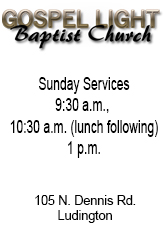 Good Neighbor Tips. A blog by Erin Doan, Erin Doan State Farm Insurance, Scottville;www.erindoan.com.
Good Neighbor Tips. A blog by Erin Doan, Erin Doan State Farm Insurance, Scottville;www.erindoan.com.
Winter’s on its way! Get ready by preparing your home and vehicle for colder weather. You can improve your safety, save money and keep comfortable throughout winter with a few simple steps:
At Home: Have you…
- Cleaned the gutters? Clear debris from gutters and test downspouts for drainage to protect against water damage.
- Trimmed trees? Cut back dead or dying limbs and any branches that can touch the roof or siding. When it’s windy, branches can rub or scratch the surfaces of your home and cause damage. They also could fall during a storm or break under heavy snow and ice.
- Stopped the air leaks? Eliminating air leaks will improve your home’s comfort and efficiency. Your first stops? The basement and the attic. Attic leaks allow warmed air to escape, and have the effect of drawing cold air in through basement leaks. Use a can of spray foam insulation to plug up the offenders in both areas.
- Scheduled a heating system inspection? Have your furnace professionally inspected and cleaned to reduce the risk of a breakdown and to keep the system running efficiently. If you have a fireplace, have your chimney professionally cleaned and inspected and ensure that your damper opens, closes and seals tightly.
- Winterized outdoor faucets? Remove all hoses or devices attached to outdoor spigots. Have in-ground sprinkler systems blown out, and turn off water to outdoor spigots. Be sure to drain any water left behind in the pipes.
Learn more timely home maintenance tips from State Farm.
Your Vehicle: Have you…
- Had your vehicle serviced? Ask your mechanic to perform an inspection: Test the battery and brakes, inspect the exhaust, check the cooling system, check fluids, change the oil, and make sure all components are working properly. Check the vehicle’s owner’s manual for information on the correct fluid types and recommended service intervals.
- Checked the wiper blades? Inspect your wiper blades to make sure they’re functional and in good condition. If you live in an area that typically sees lots of snow and ice, consider installing winter blades. Store an ice scraper in the car, and stock up on windshield washer fluid rated to withstand -30 degrees or lower temperatures.
- Monitored the fuel line? Today’s ethanol fuels remove small amounts of water from your fuel system to help prevent freezing. In addition, you can help keep avoid freeze-ups by keeping your vehicle in a heated garage, avoiding refueling while the tanker truck is at the station (water and deposits from the tanker could end up in your fuel line) and keeping your gas cap secured. Another solution: Always keep the tank at least half-full.
- Inspected the tires? Check for uneven wear, cupping, sidewall cracking and other damage or deterioration. Also examine tire treads to make sure the grooves are deep enough to grip slick surfaces. If your tires fail any of these tests, replace them with all-season tires, or, in extreme winter environments, with winter snow tires. Wonder if your tires have enough tread? Try the penny test: Stick a penny (Lincoln head first) into one of the grooves that goes completely around the tire. If you can see the top of Lincoln’s head, your tread is worn down below 2/32 of an inch and should be replaced.
- Stocked the trunk with emergency equipment? Essentials include: Flares, jumper cables, a shovel, a first-aid kit, a flashlight, extra batteries, non-perishable snacks and cold-weather gear.
We asked drivers to show us the junk in their trunks! Watch this video to find out what emergency equipment your trunk should include.
Learn more winter driving survival tips from State Farm.









































.png)




















